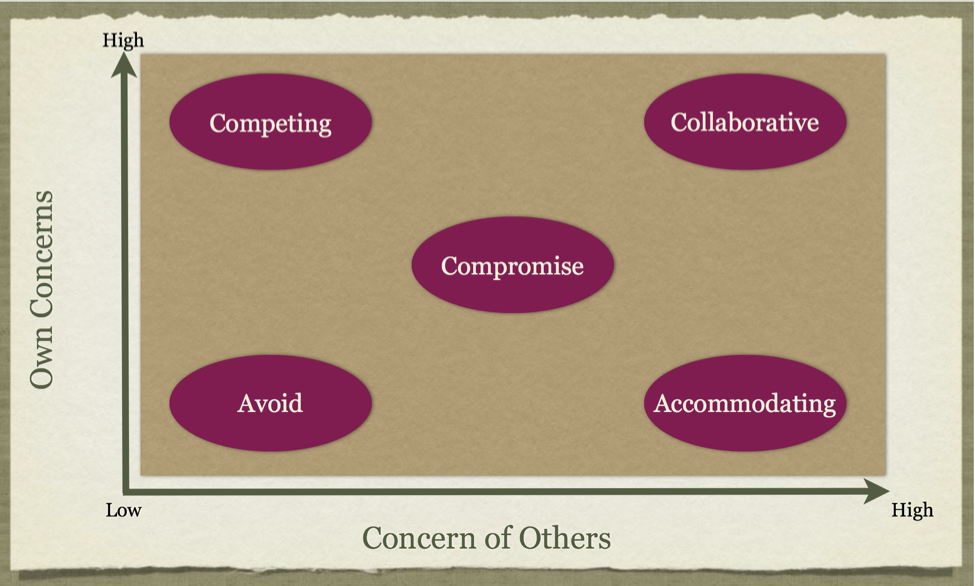Managing Opposition To Strategy Within The Executive Ranks

The most fortunate of business executive’s possess a clear vision for their organization’s developmental journey. They are tuned into the business strategy and know what milestones they expect to see; holding predictions related to how long each should likely take to be reached. The top executive is literally in the driver’s seat, controlling the vehicle which is their organization. But what about the executives in the passenger seats? Will they be along for the full journey? Once corporate strategy has been developed and strategic planning gives way to strategy execution, it is not uncommon for CEOs to smell dissent from some corners of the organization. Some amount of disunity is to be expected as a part of any business transformation. In fact, resistance to adopting new ways is the reason why change management is a critical component of strategy implementation. However, it can be very damaging to the entire business if a senior member of the management team is harboring a strong opposition to the chosen business strategy and becomes an antagonist seeking to divide loyalties within the group. Are such tactics a form of mutiny or just the behavior of an executive that might be overly passionate in their disagreement and expressing themselves in an inappropriate way? As the organization’s leader, how would you handle the situation? This article examines the dilemma of managing dissent within the management team related to corporate strategy.
The Responsibility of Leading Strategy
Leading others requires vision, passion and communication. It also requires others to follow. Sometimes the organization’s sense of purpose and direction is the result of a brilliant and visionary leader, who’s influence sweeps up the enterprise in his or her own enthusiasm for the future they see. Other times, in the absence of such a visionary leader, the shared vision must be discovered and adopted by a group of leaders and propagated through circles of influence within the organization. In both cases, the vision must be shared by the entire executive management team and uniformly communicated and backed throughout the enterprise.
But what if the strategies interpretation within the executive team is not aligned with the CEO’s intensions? Worse yet, what if one or more members of the executive team openly or even secretly oppose the strategy and seek to undermine it? On a battlefield, the situation could be disastrous. The same is true in the business environment. Once the strategy has been laid, the plan developed and the orders given — unified execution must follow with action marked by coordinated teamwork and commitment throughout the ranks.
This, of course, requires that we, as leaders, have a clear vision of our intended outcomes. Being in the leadership role necessitates that we articulate our vision and strategy in concise language — often and consistently. We must also collaborate with our management team to gain their insight, perspectives and direct input when formulating strategy. An inclusive approach should foster buy-in and commitment to the strategy. Even so, the CEO must stay tuned into his direct reports and correctly read the situation to know if they are really “on board” as a productive component of the strategy implementation or alternatively to sense if they are working their own agendas and attempting to subvert the process.
Obstacles Will Occur, Regardless
With or without dissent occurring within the executive team related to the strategy, challenges in implementation will pop up that can erode other executives’ confidence and enthusiasm for the strategy. The manner in which the CEO handles such challenges can be an important determinant to getting the program back on track and continuing forward progress.
When obstacles do come up, adjustments must be made quickly to enact contingency plans or tweak the operational tactics needed to counter the factors effecting the successful execution of the strategy. Milestones and timeframes in a strategy implementation can shift because there are many moving parts of our business that do not always behave the way we expect them to. Leaders can just about count on being detoured onto a bumpy dirt road at some point along the strategic journey.
When problems do occur, fear, uncertainty and doubt will likely creep in and dampen some of the the enthusiasm the executive team began with. At those times, leaders must step up and offer encouragement as well as updated information related to the strategy rollout including data on revised strategic milestones and updated forecasts envisioned for reaching goal targets. This information must be communicated frequently, in tandem with the implementation of programs to empower and mobilize our workforce to help the organization reach them. By doing so, frustration levels will naturally go down because the CEO continues to show confidence as well as an understanding of the situational factors to be dealt with. Consequently, the senior executive team will be far more likely to remain unified and maintain their faith in the strategy.
To sum up this point, top executive’s simply must ensure that their vision for the organization’s strategic journey is widely disseminated, fully understood and is being actualized. Undermining the strategy, especially when it is done by high-ranking executives, cannot be tolerated and must be addressed if it occurs. Otherwise, isolated pockets of dissent can mushroom and become bigger obstacles standing in the way of gaining strategic momentum.
How To Manage Conflict For Positive Returns
To manage conflict and drive positive outcomes when dissent occurs, it is critical to understand the behaviors behind it. The “model of concerns” (see graphic below) addresses the quotient of concerns in a conflict relative to personal passion and can help resolve such disagreements.
When the concern quotient for “self” is low, conflict is avoided and the individual will yield to the ideas of others without offering their own input (lose-lose). Likewise, when the quotient for self is high, the individual will be competing to get their idea pushed through – at the expense of other ideas (win-lose).
The quotient representing the other dimension of the model is “concern with others”. When the self concern quotient is low and the concern with others quotient is also low, that leads to accommodation (lose-win). Conversely, when the self concern quotient is high and the concern with others quotient is also high, that leads collaboration (win-win).
Striking a balance of both quotients is desirable – unfortunately, we cannot expect consistency in an individual regarding their level of concerns shown from situation-to-situation. In one circumstance, when attachment to an idea is personal for instance – accepting input from an opposing view can be difficult. In another situation, the owner of the idea may have less emotion and not be inclined engage in battle to further their cause.
The following tips are helpful to establishing an environment for healthy conflict to occur:
1. Know the executive team’s styles to manage them towards healthy debate of ideas rather than heated or bitter fighting based on emotion with no concern for others
2. Stay familiar with all executive team’s resumes and capabilities – leveraging knowledge of staff member’s backgrounds to appropriately urge them to share ideas from their experience
3. Foster the development of a shared vision within the executive team by creating an open environment where promoting new ideas is encouraged
4. Teach executive team members to focus on the issue being debated and not the person sponsoring the idea
5. Teach executives to focus on concrete data and not opinions when new ideas are being challenged
6. When facilitating conflict resolution, get three to four alternatives on the table
7. Listen and be aware of procedural justice – extent to which people believe:
– The process was fair
– They were heard
– Their ideas were valued
8. Leverage an executive coach for skill building with problem executives
9. When conflict cannot be satisfactorily resolved, counsel the problem executive about the consequences of not being a part of the go-forward strategy
***
Resources for Taking Action
Free Strategic Planning Article Compilations and PDFs:
1 Free access to the Strategic Planning Monthly: Archive
2 Free Online Strategic Planning Articles Library
3 Free Strategic Planning PDF Downloads
4 Information about Strategic Planning Learning and Development Programs
Category: Strategic Planning
Tags: Change Management, Joe Evans


